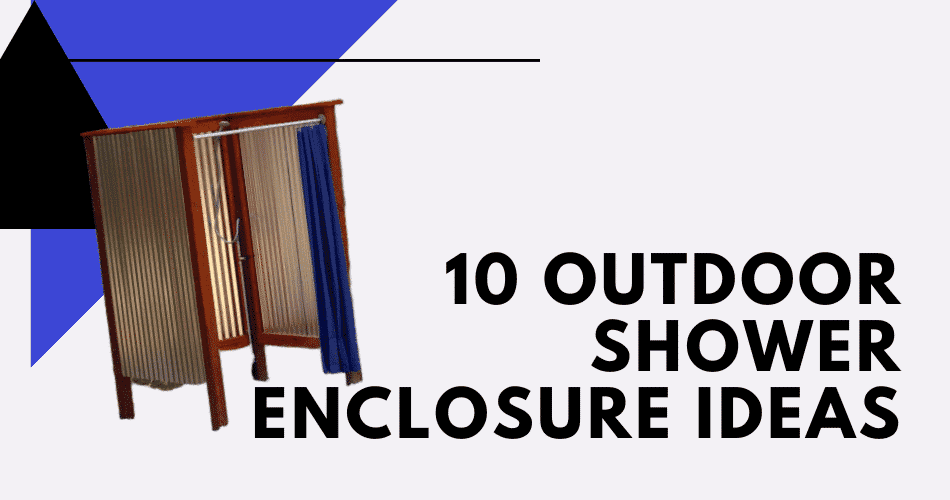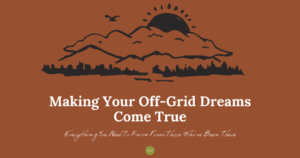When you build a tiny home, you may be faced with decisions about things that simply hadn’t occurred to you at the start of the project.
One such example is ‘how will you bathe?’ This article aims to explore some of the options that are available to you, depending on your circumstances.
Some Outdoor Shower Considerations
Be careful that you don’t leave gaps that are too big; you could trip over them and even drop your soap through.
I saw a really great idea at a lakeside shower. It had a built-in box, filled with pebbles that not only looked good, but had a massage effect on the bottom of the feet. The water filtered down through the rocks and back to the earth below.
This simple solution places the water you use back into the water table naturally, while providing you with a therapeutic surface that stays free of mud. You won’t lose your soap either!
Let’s talk about things to consider when choosing your tiny home shower type …
1. Privacy Concerns with Outdoor Showers
Where will your tiny home shower be in relation to other people? Just because you are off-grid doesn’t necessarily mean that you are miles from other people.
If you like your privacy, you’ll want to build a secure building to enclose your outdoor shower. Essentially this can be an open-air shower with a roof over it, and walls like a bathroom stall.
Again, you could get very elaborate and use cement blocks to create a shower house. You might want to make a shower/greenhouse combination that waters your plants as you shower.
A shower can even be rigged as part of a hydroponics system that grows food and feeds fish – that’s if you’d like to get deep into the benefits of hydroponics.
2. Drainage choices
Whether indoors or outdoors, how will your tiny home shower drain and where will it drain to?
An indoor, fully plumbed shower can be run outside to a French drain or into a small make-shift septic system.
You can create a drain field with hoses and rocks that work much like those in septic tanks.
Will this be legal in your area? Check to make sure that the location of your tiny home isn’t in an area where code enforcement strictly forbids draining gray water to the ground.
You could face fines if you break local code and regulations. Be well-informed and do your research before beginning your project.
What type of soil do you have – and will it drain well naturally – or will you need to build a platform for your outdoor shower?
3. Permanent or Seasonal?
If you’re going to build a permanent tiny home in a place that has 4 seasons, you might not be able to use an outdoor shower year-round.
What’s the work-around for this? Would you be better off building indoors, or should you add a small enclosed shower-house on the property that you can easily walk to and heat with a small wood stove in winter?
Could the wood stove also act as your hot water heater? My brain loves that solution.
Is it just as easy to build an indoor shower and be done with it? Which makes the most sense to you?
If you’re living in a 12-foot wide and 20-foot long cabin, you may find it hard to make room inside for a shower.
On the other hand, it may be more trouble to create an outdoor area that you can’t use in the winter.
4. Running Water or Carried Water
Will you have water lines run to your shower or will you carry buckets of water to your shower? Both are viable options depending on your needs and your location.
Using water from a bucket will definitely force you to conserve your water and learn to get wet, lather all over, then rinse.
When running water is plumbed, it’s very easy to simply leave the water on, and this creates waste. Do you have plenty of water or do you absolutely need to conserve every drop?
One potential solution that I saw in a tiny house on wheels was that the lady used a garden hose sprayer as her shower head.
It forced her to let go, which cut the water off throughout her showers.
I don’t know about you, but I love simple solutions that produce good results. The hose nozzle in the shower was a huge knowledge bomb for me.
5. Will you be in the same location in a year?
Even those living in THOWs can build an outdoor shower just because showering outdoors is really fun.
If you’ve never showered outdoors, let me say that it’s very liberating to feel the sunshine on your face and shoulders as you enjoy a shower, possibly with harvested rainwater.
That said, it is a lot of work to build an outdoor shower.
You could create a temporary solution with a tarp that becomes a shower enclosure instead.
Try using a small pallet with a rubber mat over it for standing on.
This will protect your feet while letting water drain so you aren’t standing in mud after a few minutes.
6. An outdoor shower allows you to get really creative.
From a personal standpoint, building an outdoor shower will allow you to save space inside and save a lot of plumbing work.
I’ve seen extravagant outdoor showers and some very simple applications. What sort of person are you? Do you really enjoy your showers or do you view it as a task to be done quickly?
You don’t have to worry about installing drains for outdoor showers.
Water will drain away naturally, but you’ll want to provide for an elevated place to stand to avoid muddy feet.
Teak wood handles exposure to water and the weather very nicely.
Consider using teak wood to make yourself a nice platform that you can use and move whenever you desire.
7. Will you re-use your shower water?
Will you use holding tanks for your gray water (water that drains from your shower)?
My solution – and what many people off-grid do – has been to run a line for gray water out to gardens.
Make sure you use biodegradable soaps and shampoos that have no harmful chemicals.
You can use your water twice; it really helps to conserve water in this way.
Sink water can also be used in the same fashion.
Each time you use water to bathe or wash dishes, you water your garden at the same time.
8. What Type of Home Are You Building?
A tiny home on wheels (THOW) will likely be plugged into the grid and have water connections available at least part of the time.
Campgrounds will offer these hook-ups and some THOW owners are able to set up camp on a permanent lot that allows them to either hook to the resources there, or use shower facilities in a campground.
If you are going to be living in campgrounds, you may never use your shower. I lived in a 27 foot Class C motorhome for 3 years, traveling around the country.
My shower served as a closet. It may be a better use of space for you to rely on the public bathrooms where you are parked permanently.
On the other hand …
9. If you are building a permanent off-grid paradise of your own, without wheels, you’ll need a way to bathe.
Thousands of options are available for small sinks and custom sized shower surrounds.
You can also customize your own shower with a little work.
If you choose to create an indoor shower, you’ll want to keep it small, yet big enough to be functional.
I strongly suggest that you use some chalk and draw the dimensions on the floor and practice stepping in and out of the imaginary shower.
Do you feel cramped? If you do, it will only feel more so when the walls are in place.
10. How will you get your water to ‘run’ indoors?
Many off-grid tiny homes don’t have running water.
If you collect water or have it delivered to a water tank, you can gravity feed your water into the house by elevating your tank.
On the other hand…
You can also use a 12-volt water pump that is made for RV and camper applications.
It will run from a 12-volt battery or from your solar power system.
This will pump the water each time you turn on the faucet in your home.
It’s a very simple solution to having running water in your tiny home shower.
Additional thoughts and opinions…
You don’t have to have running water, and some people choose not to.
Heating a pot of hot water over the flames of a fire or over an LP cookstove works well for some people.
I once saw a pulley system that was designed with a watering can, that I admired very much. It was an old-fashioned method, with a twist.
It looked nice and was functional too.
A small pull chain on the front of the bucket allowed the user to pull the chain to get wet.
A second pull of the chain allowed for rinsing and the whole shower only took approximately 2 gallons of water: a fantastic way to conserve your resources.
If you’d like to get a bit more detailed, you could install an instant hot water system that uses a propane tank to heat water.
This system will provide you with hot water in off-grid situations at a rate of about 2 gallons per minute.
These portable shower solutions allow for hot showers no matter how remotely you are living or camping.
You can find them in most outdoor recreational stores and you’ll be pleasantly surprised at how affordable they are.
When it comes to shower solutions …
There are as many as there are people.
It depends on what you like, what fits your budget and what solves your needs.
You can use recycled materials or buy brand new.
You can create your shower head from a watering can, a coffee can or spend $200 on a gorgeous fixture because you love the way it looks. It all works.
The only question is ‘does it work for you?’
There are many things to consider, and we’ve covered most of the bigger ones, but you may have considerations of your own.
Do you have a family? Will there be room to bathe kids together? That can help use less water!
Will anyone be using the shower who needs accessibility for a wheelchair or other medical equipment?
This will require more space, wider doorways, and using fixtures that can be operated by everyone with the same ease.
You’ll also want to take into consideration how much water you can accumulate each month in storage.
Rainwater is a great solution during 3 seasons of the year.
What happens in winter if you are in an area with snow?
Will you melt snow for bathing? It takes a lot of snow to create a gallon of water, and it may not be the best solution for you.
Can you collect and store enough water to ration through the winter?
How will you prevent that water from freezing?
It’s good to ask these questions!
There are solutions to all of these problems if you continue researching and reading.
There are many things to consider, and we’ve covered most of the bigger ones, but you may have considerations of your own.
What are your thoughts or ideas?! We’d love to hear them. Leave a comment or question below!



